#novelistic
Explore tagged Tumblr posts
Text
'Life' contains situations more interesting, more novelistic than any novel.
from In Search of Lost Time, Book 1: Swann’s Way by Marcel Proust
#in search of lost time#swann's way#marcel proust#proust#life#the book of life#book of life#life is a book#life is an adventure#life is interesting#life is novelistic#life is a novel#novel#novelistic#novelty
20 notes
·
View notes
Text
10 Ways to Add Sizzle to Your Boring Writing
Writing that sizzles captures the reader's attention and keeps them engaged from start to finish. Whether you're an experienced writer or just starting out, there are several techniques you can use to make your writing more exciting and dynamic. Here are ten detailed ways to add sizzle to your boring writing:
1. Use Vivid Descriptions
Vivid descriptions bring your writing to life by creating a rich, immersive experience for the reader. Instead of relying on generic or bland language, use specific details that appeal to the senses. Describe how things look, sound, smell, taste, and feel to paint a vivid picture.
In Detail:
Visual Descriptions: Use color, shape, and size to create a mental image. Instead of saying "The car was old," say "The rusty, olive-green car wheezed as it pulled into the driveway."
Sound Descriptions: Incorporate onomatopoeia and detailed sound descriptions. Instead of "The music was loud," say "The bass thumped, and the high notes pierced through the night air."
Smell and Taste Descriptions: Use sensory language. Instead of "The food was good," say "The aroma of roasted garlic and herbs filled the room, and the first bite was a burst of savory flavors."
2. Show, Don't Tell
"Show, don't tell" is a fundamental writing principle that means revealing information through actions, thoughts, dialogue, and sensory details rather than straightforward exposition. This approach makes your writing more engaging and allows readers to experience the story.
In Detail:
Actions Over Exposition: Instead of telling the reader "Jane was scared," show her fear through her actions: "Jane's hands trembled as she fumbled with the lock, her breath coming in shallow gasps."
Dialogue: Use conversations to reveal character traits and emotions. Instead of "John was angry," show his anger through his words and tone: "John's voice was a low growl as he said, 'I can't believe you did this.'"
Internal Thoughts: Reveal characters' inner worlds. Instead of "Emma felt relieved," show her relief: "Emma let out a long breath she didn't realize she was holding and sank into the chair, a smile tugging at her lips."
3. Create Relatable Characters
Relatable characters are crucial for keeping readers invested in your story. Characters should have depth, including strengths, weaknesses, desires, and fears. When readers see aspects of themselves in your characters, they're more likely to care about their journeys.
In Detail:
Character Flaws: Give your characters realistic flaws. A perfect character can be boring and unrelatable. Show how these flaws impact their decisions and relationships.
Character Arcs: Ensure your characters grow and change throughout the story. A well-crafted character arc can turn a good story into a great one.
Background and Motivations: Provide backstories and motivations. Why does your character act the way they do? What drives them? This adds depth and makes them more three-dimensional.
4. Add Dialogue
Dialogue can break up large blocks of text and make your writing more dynamic. It reveals character, advances the plot, and provides opportunities for conflict and resolution. Ensure your dialogue sounds natural and serves a purpose.
In Detail:
Natural Speech: Write dialogue that sounds like real conversation, complete with interruptions, pauses, and colloquial language. Avoid overly formal or stilted speech.
Purposeful Dialogue: Every line of dialogue should have a purpose, whether it's revealing character, advancing the plot, or building tension. Avoid filler conversations that don't add to the story.
Subtext: Use subtext to add depth. Characters might say one thing but mean another, revealing their true feelings through what they don't say directly.
5. Use Strong Verbs
Strong verbs make your writing more vivid and energetic. They convey action and emotion effectively, making your sentences more powerful and engaging.
In Detail:
Action Verbs: Choose verbs that show precise actions. Instead of "She went to the store," say "She dashed to the store."
Avoid Weak Verbs: Replace weak verbs and verb phrases with stronger alternatives. Instead of "He was walking," say "He strode."
Emotionally Charged Verbs: Use verbs that convey specific emotions. Instead of "She was sad," say "She wept."
6. Vary Sentence Structure
Varying sentence structure keeps your writing interesting and prevents it from becoming monotonous. Mix short, punchy sentences with longer, more complex ones to create a rhythm that engages readers.
In Detail:
Short Sentences for Impact: Use short sentences to create tension, urgency, or emphasize a point. "He stopped. Listened. Nothing."
Complex Sentences for Detail: Use longer sentences to provide detailed descriptions or explain complex ideas. "As the sun set behind the mountains, the sky transformed into a canvas of oranges, pinks, and purples, casting a warm glow over the serene landscape."
Combine Different Structures: Mix simple, compound, and complex sentences to maintain a natural flow. Avoid repetitive patterns that can make your writing feel flat.
7. Introduce Conflict
Conflict is the driving force of any story. It creates tension and keeps readers invested in the outcome. Without conflict, your story can become stagnant and uninteresting.
In Detail:
Internal Conflict: Characters should struggle with internal dilemmas, fears, and desires. This adds depth and relatability.
External Conflict: Introduce obstacles and challenges that characters must overcome. This can be other characters, societal pressures, or natural forces.
Resolution: Show how conflicts are resolved, leading to character growth and plot progression. Ensure resolutions feel earned and satisfying.
8. Use Metaphors and Similes
Metaphors and similes add creativity and depth to your writing. They help readers understand complex ideas and emotions by comparing them to familiar experiences.
In Detail:
Metaphors: Directly state that one thing is another to highlight similarities. "Time is a thief."
Similes: Use "like" or "as" to make comparisons. "Her smile was like sunshine on a rainy day."
Avoid Clichés: Create original comparisons rather than relying on overused phrases. Instead of "busy as a bee," find a fresh analogy.
9. Create Suspense
Suspense keeps readers on the edge of their seats, eager to find out what happens next. Use foreshadowing, cliffhangers, and unanswered questions to build tension and anticipation.
In Detail:
Foreshadowing: Drop subtle hints about future events. This creates anticipation and a sense of inevitability.
Cliffhangers: End chapters or sections with unresolved tension or unanswered questions to compel readers to keep going.
Pacing: Control the pace of your story to build suspense. Slow down for crucial moments and speed up during action scenes.
10. Edit Ruthlessly
Great writing often emerges during the editing process. Be willing to cut unnecessary words, tighten your prose, and refine your sentences. Editing improves clarity, pace, and overall readability.
In Detail:
Cut Redundancies: Remove unnecessary words and repetitive phrases. "In my opinion, I think" can be reduced to "I think."
Focus on Clarity: Ensure each sentence conveys its intended meaning clearly and concisely.
Proofread: Check for grammar, punctuation, and spelling errors. A polished manuscript reflects professionalism and attention to detail.
#writeblr#writing#creative writing#thewriteadviceforwriters#writing tips#writers block#on writing#writers and poets#how to write#novel writing#writing blog#writing advice#writer#authoradvice#author#book writing#women writers#fiction#authors on tumblr#novelist#writer stuff#female writers#fiction writing#fantasy novel#novel
5K notes
·
View notes
Text

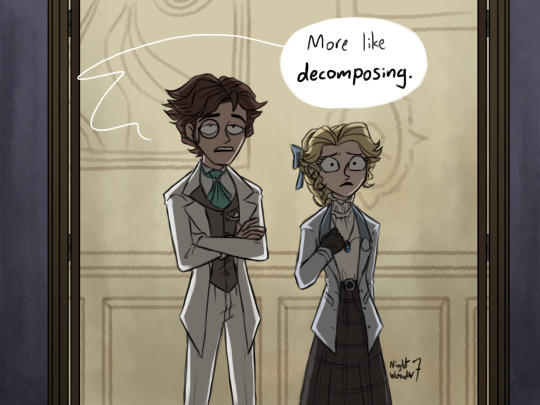
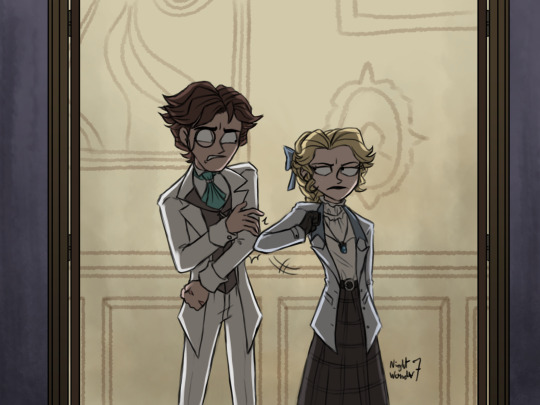
Help him touch some grass
#identity v#idv#identity v fanart#idv fanart#identity v composer#idv composer#frederick kreiburg#identity v novelist#idv novelist#orpheus#idv orpheus#identity v journalist#idv journalist#alice deross#comic#night's art#why did i bother making a bg but not properly line the thing?#it's so dumb fgsjfds
2K notes
·
View notes
Text




Her final tweet on October 8 reads:
“Gaza’s night is dark apart from the glow of rockets, quiet apart from the sound of the bombs, terrifying apart from the comfort of prayer, black apart from the light of the martyrs. Good night, Gaza.”
#i can't stop crying#oh this grief. this endless fathomless grief#rest in power little sister#free palestine#hiba abu nada#i love they used the present tense for her. she IS a novelist and poet and educator and will be as long as her memory endures#save gaza#gaza genocide#palestinian genocide#from the river to the sea 🇵🇸#palestinian poetry#palestinian art#knee of huss
7K notes
·
View notes
Text



Really excited to share BALLAD FOR BLACK CASSANDRA with y'all in October. I've been waiting to draw this one since 2020.
For now, just a few pages 💖

#my art#comic#comics#new comic#ballad for black cassandra#shortbox comics fair#art#illustration#graphic novelist#indie comics#poetry comic
3K notes
·
View notes
Text
Ken "Okarun" Takakura relationship headcanons

warnings: established relationship, fem!reader, tooth-rooting fluff, spoilers up to episode 8 in the anime.
divider by @cafekitsune

Ken “Okarun” Takakura is a socially awkward guy with an all-consuming interest in anything related to the supernatural, especially cryptids and aliens. Some people may think he is too much to handle because he’s a nerd or his appearance is a little off-putting, but he’s used to that after being bullied throughout elementary and middle school. He can handle the taunting, the jeers. It’s nothing new to him.
But when he hears a nasty rumor being spread around school about you, his precious girlfriend? Momo is going to have a hard time keeping him calm and will definitely drag you away from class as a last resort to revert the transformation into his yokai form. Good luck with handling an extremely overprotective boyfriend, especially if you unintentionally get caught in the crossfire of whichever ghost or alien are targeting him for his reproductive organs.
He doesn’t know why everyone is after his junk, so please do not ask him that question.
You are important to Okarun, so his happiness is your happiness. He’s not really a person who would do over-the-top gestures just to make you smile, though he shows his affection for you in the small things like leaving little snacks on your assigned desk or waiting to walk home with you once classes are over for the day.
Physical intimacy with him is going to be like a slow-burn in those romance novels, so please respect his boundaries and decision to relish in the feeling of your interlocked fingers or sharing kisses on the cheek before going into the heavier stuff. He’s shy and wants to do things the right way, even when every relationship is different for everyone. If you start something instead of him for a change? His face will resemble a ripe cherry, and smoke will come out of his ears before squeaking in embarrassment.
Cuddles? Definitely possible, but much further down the road once he gets more comfortable in the relationship.
He’s the guy who doesn’t mind doing an X-Files or horror movie marathon on the couch with you and it counts as a date. Any time with you is precious.
You have a part-time job? No worries, he’ll be more than happy to wait until you get off if you’re working late to walk you home!
Okarun trusts you, and he hopes you will trust him. Communication is also key, so if there is something bothering you, please tell him. He won’t know unless you say something, and you avoiding or giving him the silent treatment will have him second-guessing and thinking he really isn’t good enough for you. He’s a green flag. Seriously, talk to the guy if you got troubles on your mind. He will listen and not judge you.
Remember what happened when Aira tried to kiss him in the school courtyard during lunch and he pushed her away? He did it once, and will gladly do it again to her, to any girl who tries to make a move on him because he doesn’t want them. He wants only you.
Treasure this cinnamon roll and treat him like the amazing person he is, because there is no other guy around who would fight yokai and aliens to protect you like Ken Takakura.

Taglist: @hoodiepandaninja16 @napbatata @silverklaus @karai-frost @anonymity-222 @melodiblues @myduality @cumbersome-robes @taesy-miranda-lee @osarumi @satorousgf @theofficialfem @sadprimrose @miaurieee @bumblebeebutter @shidousprincess @minnie-1-3 @cherie-soup @kazudare @sleep-all-day-everyday @decay-1 @justamegafan @bdudette @skwunkler
#an idyllic novelist#dandadan x reader#dandadan#okarun fluff#okarun x reader#ken takakura x reader#ken takakura dandadan#dan da dan anime#fem!reader#okarun x reader headcanons
1K notes
·
View notes
Text
3 Exercises To Improve Your Writing/Manuscript
1) Sentence Patterning 🎨
Print off a random page of your work and use different coloured highlighters on each sentence depending on how long they are. You might notice you’ve been stuck in a rhythm without realising it. A rainbow is what you want to see!
2) Stickynoting! 📝
Write out each scene (or topic change) on a stickynote thats colour indicates how plotheavy it is. A few fluffy, relaxed scenes are fine, but you don’t want half the book to be pointless. Likewise, you also don't want every scene to be insanely over the top.
3) Pindropping 📌
Draw a line, mark out the major events of your story, then drop in every revelation, character introduction, first mention, shift and development. See how dense certain areas might be vs others. Do you throw everything at the reader in the first chapter? Or do you hold back too much and leave your audience clueless.
Here are some examples I did for my book!


Click “My Writing Tips” in the tags for more!
Click here to check out my book! @statusquoofficial
#my writing tips#writing prompt#novel writing#my writing#writers#writing life#aspiring writer#writing stuff#creative writing#writer#writing#ao3 writer#creative writers#fanfic writing#female writers#queer writers#story writing#tumblr writing community#writerscommunity#writer thoughts#writer problems#writing community#writing is hard#writing problems#writers on tumblr#aspiring novelist#aspiring author#aspiring artist#new author#self publishing
610 notes
·
View notes
Text

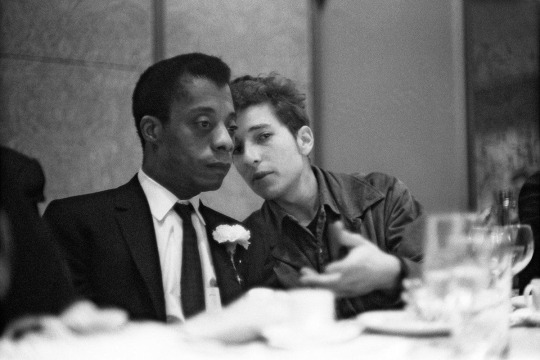
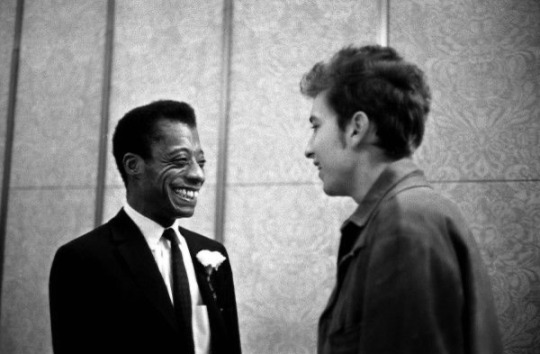
bob dylan and james baldwin
#bob dylan#james baldwin#1960#60s#60s icons#1960s#60s photography#60s vintage#1960s music#1960s vintage#1960s history#1970s#1970s music#1963#giovanni’s room#blonde on blonde#the freewheelin' bob dylan#knockin on heavens door#bob dylan and james baldwin#if beale street could talk#go tell it on the mountain#the fire next time#vintage#author#writers#novelist#vintage photography#retro#retro photography#1960s photography
2K notes
·
View notes
Text

old doodle that rotted in the folder because I was too lazy to do the gif portion waah
#identity v#idv journalist#idv novelist#orpheus deross#alice deross#*i know they're not actual siblings i just like the 'we're so close we consider each other siblings' vibes
729 notes
·
View notes
Text
Sometimes I forget that I am a coffee company.
#memory#coffee#i am not primarily a novelist or a youtuber#i am mostly a coffee company#that donates its profit to charity
1K notes
·
View notes
Text
us in the gc
#99% of writing#is just this#writing humor#writing memes#writing#writeblr#my writing#fantasy author#fantasy#romantasy#writerscommunity#ya fantasy#ya romance#novelist#cat fayssoux memes#cat fayssoux#authors are unhinged#author memes#writers#writer#writers on tumblr#writers of tumblr#memes#the shoebody bop#the minute hour#shoebody bop meme#reels#novelist memes#novelists#novels
311 notes
·
View notes
Text
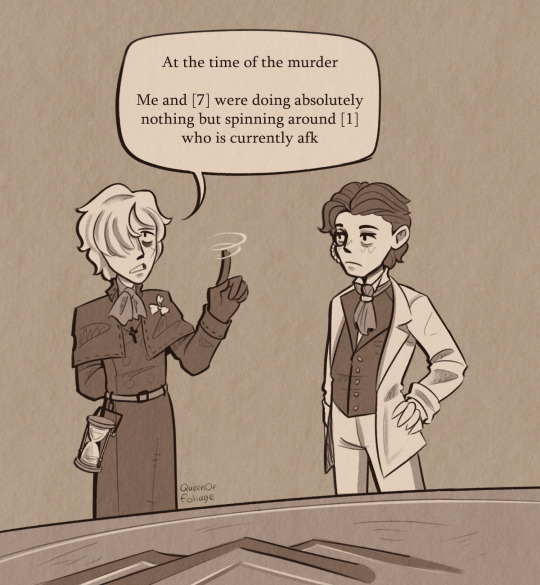
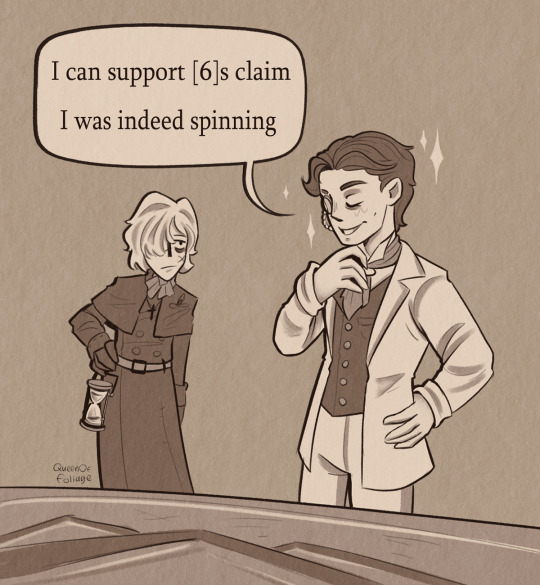
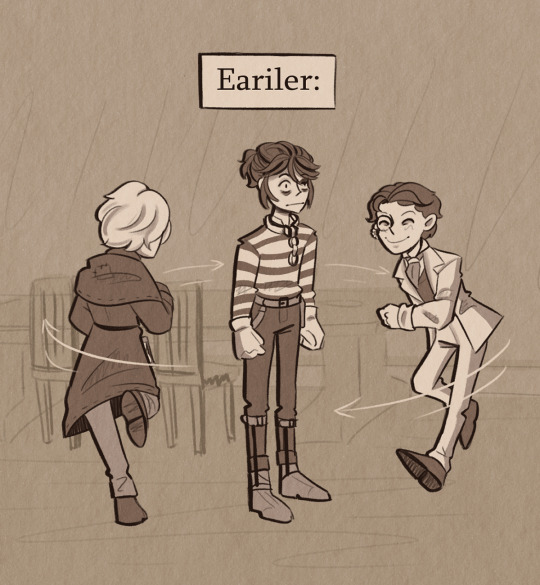
Your honor, he was indeed spinning
#identity v#identity v fanart#andrew kreiss#idv orpheus#idv novelist#my art#I am so obsessed with the new copycat mode this may be the only thing I talk about for like 3 weeks hhbdehbajw#I'm just spamming my twitter about my mildly amusing matches#I have witnessed a public execution circle organized in the garden#a little girl CHASING a Florian down across the building to shoot him#this one freddy riley...#me and this prisoner having a standoff against this copycat lucky guy over the meeting table. we died
545 notes
·
View notes
Text
Why Writers Don't Finish Writing Their Stories, and How to Fix It
Hello fellow writers and storytellers,
The journey of writing a story is an exhilarating adventure, but it's not without its share of obstacles. Many of us have embarked on a creative endeavor, only to find ourselves mired in the struggle to finish what we started. In this blog post, I'll unravel the common reasons why writers don't finish their stories and explore practical strategies to overcome these hurdles and reignite the flame of creativity.
The Perils of Unfinished Stories
As writers, we often find ourselves in the throes of unfinished tales, grappling with the intricate web of characters, plots, and themes. There are several reasons why the ink dries up and the story remains untold. Let's shine a light on the familiar adversaries that stand between us and the triumphant completion of our narratives:
1. Lack of Planning:
Some of us brazenly dive into our stories without a clear roadmap, resulting in uncertainty about the direction of the plot and the fate of our characters. The lack of a solid plan can lead us astray, leaving our stories wandering in the wilderness of aimlessness.
2. Self-Doubt and Perfectionism:
Ah, the relentless whispers of self-doubt and the siren call of perfectionism! These twin adversaries can cast a shadow over our creative vision, compelling us to endlessly revise and perfect the early chapters, trapping us in a whirlpool of perpetual edits.
3. Time Management:
Balancing the demands of daily life with the ardor of writing can be akin to walking a tightrope. The struggle to find consistent time for our craft often leaves our stories languishing in prolonged periods of inactivity, longing for the touch of our pen.
4. Writer's Block:
The mighty barrier that even the most intrepid writers encounter. Writer's block can be an insurmountable mountain, leaving us stranded in the valleys of creative drought, unable to breathe life into new ideas and narratives.
5. Lack of Motivation:
The flame that once burned brightly can flicker and wane over time, leaving us adrift in the murky waters of disillusionment. The initial excitement for our stories diminishes, making it arduous to stay committed to the crafting process.
6. Fear of Failure or Success:
The twin specters that haunt many writers' dreams. The apprehension of rejection and the unsettling prospect of life-altering success can tether us to the shores of hesitation, preventing us from reaching the shores of completion.
7. Criticism and Feedback Anxiety:
The looming dread of judgment casts a long shadow over our creative endeavors. The mere thought of receiving criticism or feedback, whether from peers or potential readers, can cast a cloud over our storytelling pursuits.
8. Plotting Challenges:
Crafting a cohesive and engaging plot is akin to navigating a labyrinth without a map. Faced with hurdles in connecting story elements, we may find ourselves lost in a maze of plot holes and unresolved threads.
9. Character Development Struggles:
Breathing life into multi-dimensional, relatable characters is a complex art. The intricate process of character development can become a quagmire, ensnaring us in the challenge of creating personas that drive the story forward. (Part one of Character Development Series)
10. Life Events and Distractions:
Unexpected events in our personal lives can cast ripples on our writing routines, interrupting the flow of our creativity and causing a loss of momentum.
Rallying Against the Odds: Strategies for Success
Now that we've confronted the adversaries that threaten to stall our storytelling odysseys, let's arm ourselves with strategies to conquer these barriers and reignite the flames of our creativity.
Embrace the Power of Planning:
A clear roadmap illuminates the path ahead. Arm yourself with outlines, character sketches, and plot maps to pave the way for your story's journey.
Vanquish Self-Doubt with Action:
Silence the voices of doubt with the power of progress. Embrace the imperfect beauty of your early drafts, knowing that every word brings you closer to the finish line.
Mastering the Art of Time:
Carve out sacred writing time in your schedule. Whether it’s ten minutes or two hours, every moment dedicated to your craft is a step forward.
Conquering Writer's Block:
Embrace the freedom of imperfection. Write, even if the words feel like scattered puzzle pieces. The act of writing can unravel the most stubborn knots of writer's block.
Reigniting the Flame of Motivation:
Seek inspiration in the wonders of the world. Reconnect with the heart of your story, rediscovering the passion that set your creative spirit ablaze.
Reshaping Fear into Fuel:
Embrace the uncertainty as an integral part of the creative journey. Embrace the lessons within rejection and prepare for the winds of change that success may bring.
Navigating the Realm of Criticism:
Embrace feedback as a catalyst for growth. Constructive criticism is a powerful ally, shaping your story into a work of art that resonates with readers.
Weaving the Threads of Plot:
Connect the dots with fresh eyes. Step back and survey the tapestry of your plot, seeking innovative solutions to bridge the gaps and untangle the knots.
Breathing Life into Characters:
Engage with your characters as if they were old friends. Dive into their depths, unraveling their quirks, fears, and dreams, and watch as they breathe life into your story.
Navigating Life's Tempests:
Embrace the ebb and flow of life. Every pause in your writing journey is a chance to gather new experiences and perspectives, enriching your storytelling tapestry.
The Ever-Resting Pen: Harnessing the Power Within
Fellow writers, the journey of completing a story is filled with peaks and valleys, each offering us the opportunity to sharpen our resolve and unleash our creative potential. As we stand at the crossroads, staring at the canvas of unfinished tales, let's rally against the odds, armed with the power of purpose, passion, and perseverance.
Let the ink flow once more, breathing life into tales left untold, and watch as your stories triumphantly reach their long-awaited conclusion. You possess the power to conquer the adversaries that stand in your way, and within you lies the essence of untold narratives waiting to unfurl onto the page.
Here's to the journey that lies ahead, the stories waiting to be written, and the unyielding spirit of creativity that thrives within each of us.
Warm regards and unwavering encouragement, Ren T.
#creative writing#thewriteadviceforwriters#writing#writeblr#on writing#writing tips#writers block#how to write#writers and poets#novelist#novel writing#november#novel
3K notes
·
View notes
Note
I can just tell that Norton will be so happy to finally chair orpheus he would be so happy










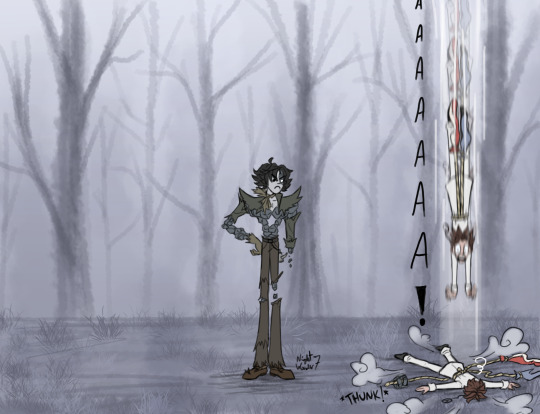
Oh, he would relish in it!


maybe...
#ask#anon#anonymous#identity v#idv#identity v fanart#idv fanart#identity v fool's gold#idv fool's gold#norton campbell#identity v novelist#idv novelist#orpheus#idv orpheus#identity v orpheus#comic#night's art#I've had this in my head for a few months now it's finally out of my head
661 notes
·
View notes


